Three
MOVING PRAYERS
THE CHURCHES THAT
FOLLOWED THEIR FLOCK
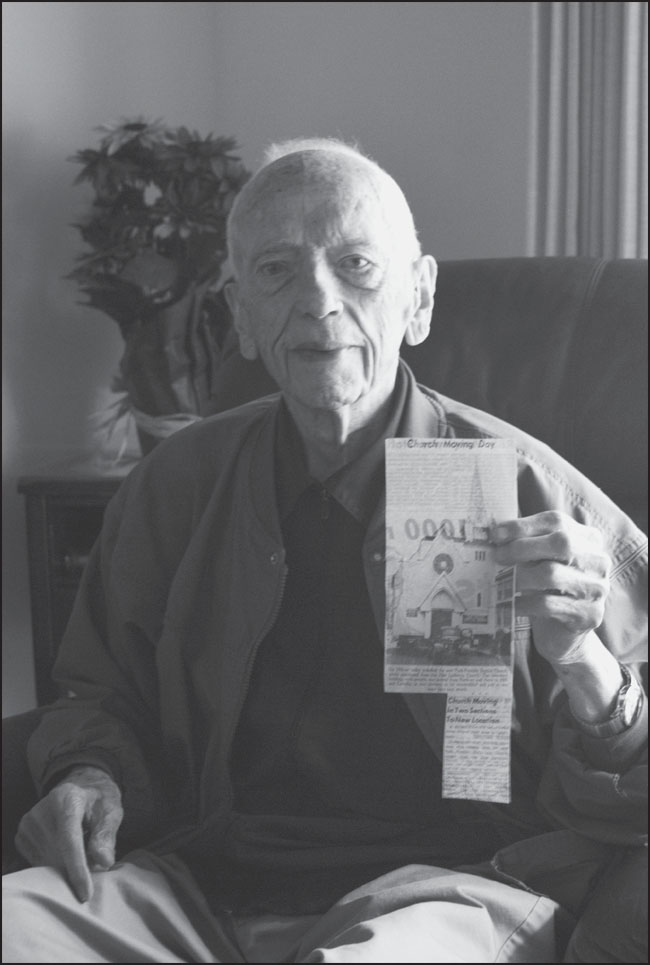
In 1949, Rev. Frank. A Jacobsen was faced with a dilemma: a small church and rapidly expanding flock. It would cost up to $5,000 to demolish the building, so he took out an ad in an interdenominational publication, and a Baptist church purchased it—for $5,000. Here, Reverend Jacobsen holds the article documenting Zion Church’s move three blocks down the street. The move began on Friday and concluded Monday morning. (Photograph by Beni C. Bacon.)
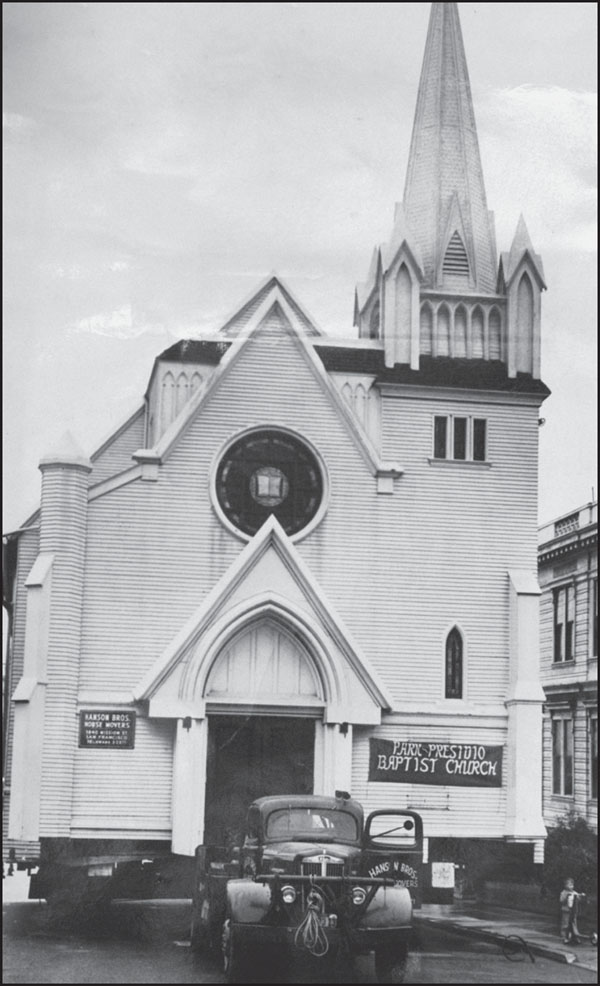
Reverend Jacobsen recalls the church move “took place in a day,” but an eyewitness reports it rested in the street all weekend, blocking traffic as it sat at the corner of Balboa Street. There was a street barricade at Cabrillo Street. All the kids came out on Saturday and Sunday to play street games while the adults socialized; it was a regular block party made possible because a church blocked their street over the weekend. (Courtesy of the History Center, San Francisco Public Library.)
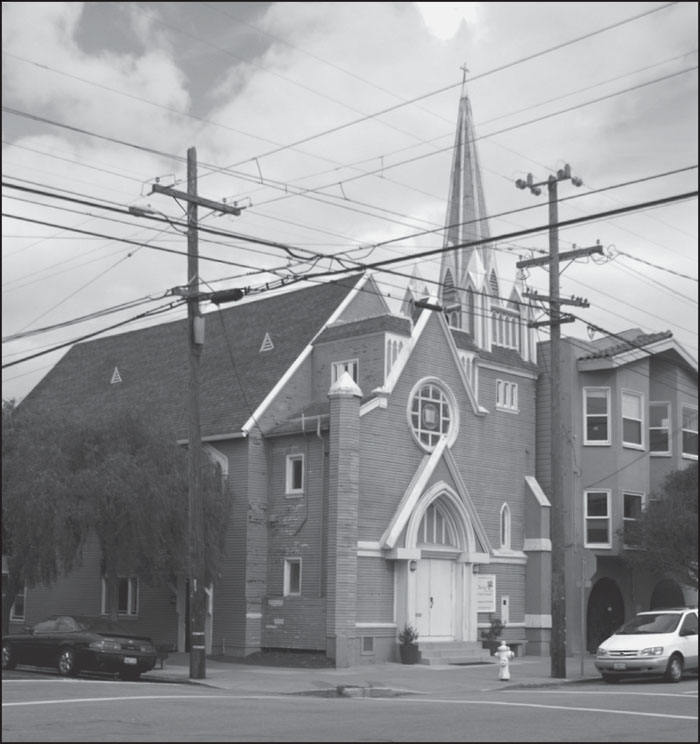
The former Zion Church still stands today on the corner of Cabrillo and Tenth Streets, but it is no longer a Baptist church. It became Christ Church at Park Presidio and still holds regular services. There is little to indicate its past, and no mention is made on its website of its moving history. (Photograph by Beni C. Bacon.)
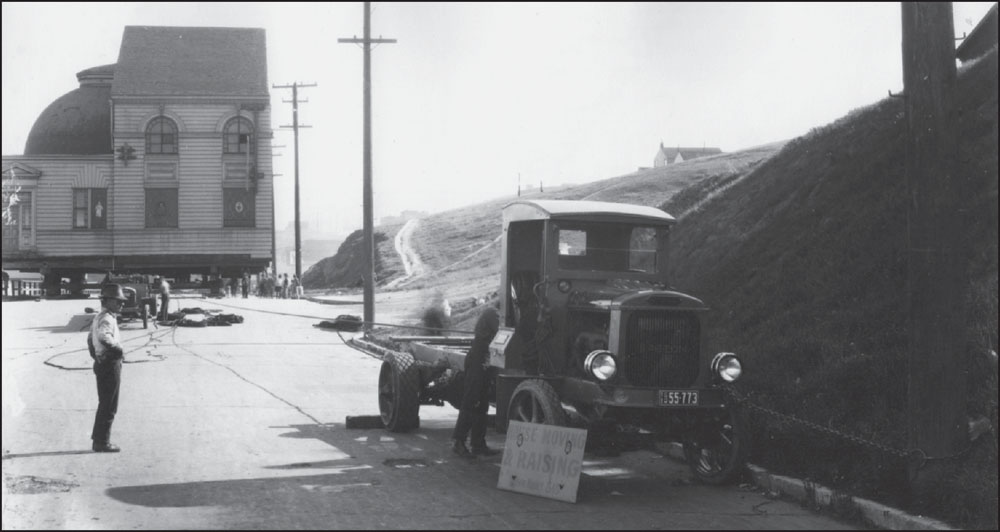
It is unusual to see half a church moving up the street, much less a whole one, but this photograph demonstrates how partial disassembly of a structure for moving purposes can be chosen, even for a larger building, to save labor costs while reducing the potential loss of a structure’s fabric. St. Teresa’s Church used this method to move its building in 1924. (Courtesy of the Potrero Hill Archives Project.)
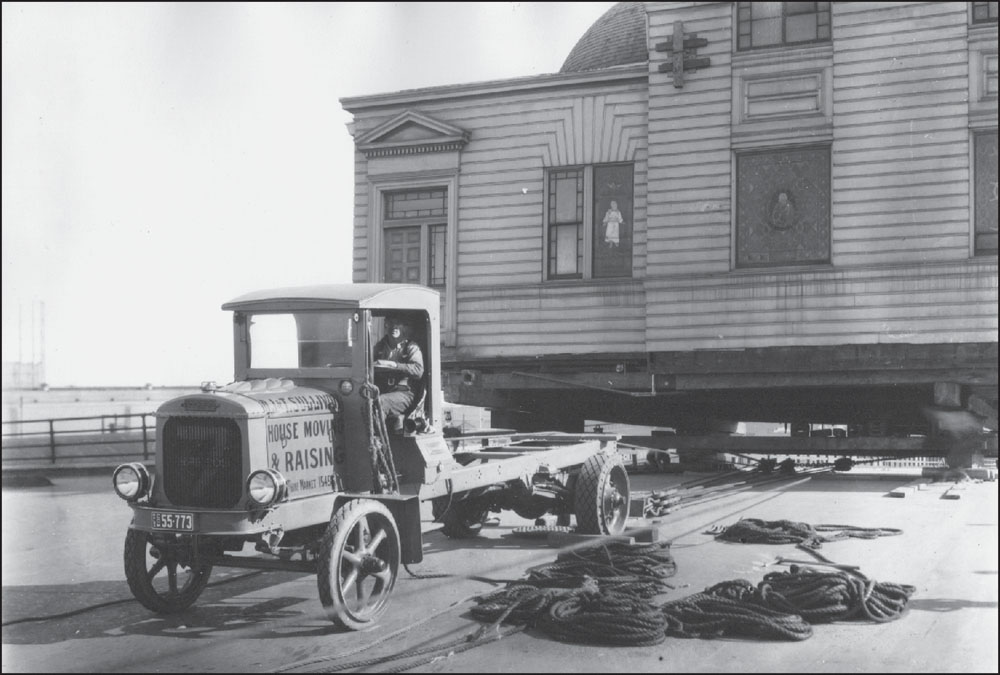
When St. Teresa’s parishioners moved to homes higher on Potrero Hill as the area became increasingly industrialized, the church decided to follow them. The Sullivan house-moving company is still in business at this time, towing the church via rollers and truck. Each part of the church was moved independently to its present location at the northeast corner of Nineteenth and Connecticut Streets. (Courtesy of the Potrero Hill Archives Project.)
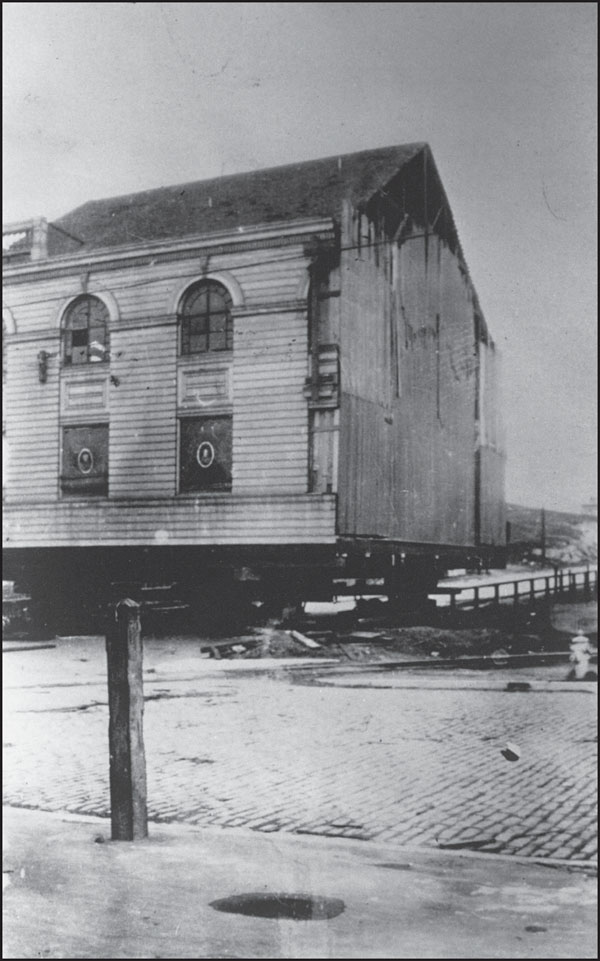
St. Teresa’s is sitting on cribbing and ready for its move. A building that cannot move as a unit requires a partial disassembly, with an emphasis on handling the move in the largest pieces possible, and in this case, it had two big sections. Larger frame buildings require more bracing, since elements that originally supported two walls cannot support both walls when they are separated. (Courtesy of the Potrero Hill Archives Project.)
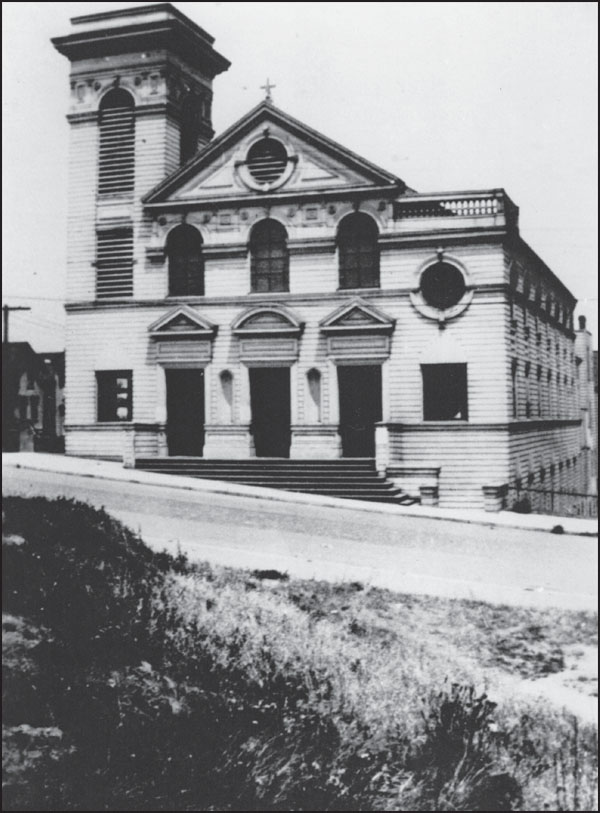
St. Teresa’s two halves were rejoined on top of a new social hall and a new rectory at the corner of Nineteenth and Missouri Streets. Since its original move in 1924, the building has been remodeled numerous times, but it still stands and is open and active. The church celebrated 120 years as a parish in 2000. (Courtesy of the Potrero Hill Archives Project.)
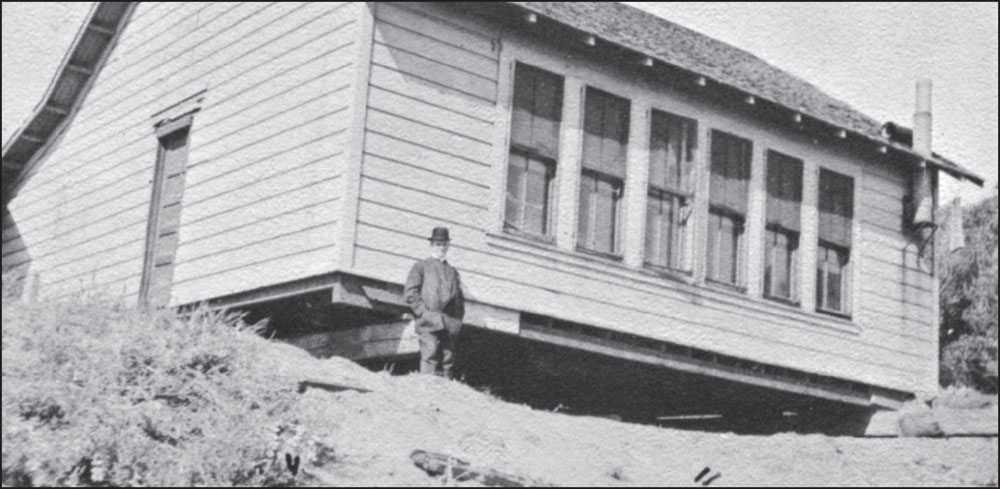
The 1909 Parkside School at Thirty-First and Taraval Streets was built as a one-room schoolhouse. When the city decided to build a new school, the mayor donated this building to the archdiocese, and it became part of the newly built St. Cecilia Church at Fifteenth Avenue and Taraval Street. In 1927, the parish hall was moved from Sixteenth Avenue and Taraval Street to newly acquired property and placed on the west side of Seventeenth Avenue. (Courtesy of Lorri Ungaretti, the Archdiocese of San Francisco Collection.)
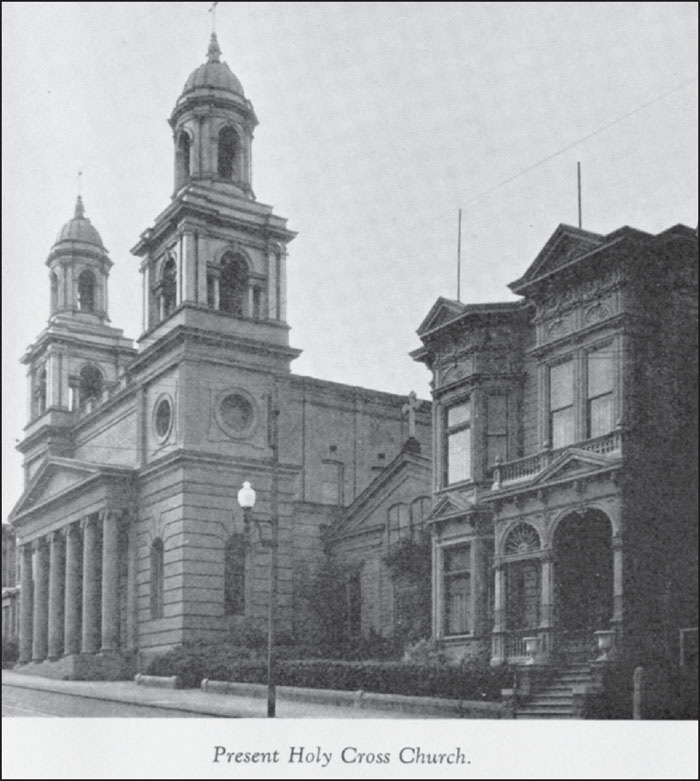
Holy Cross Church has a long and moving history. Shortly before the Palace Hotel was built in 1876, the church was moved to Eddy Street opposite Jefferson Square and renamed St. John’s Church. In 1891, it was moved again to its present site, became Holy Cross Church, and was used as the parish church. This photograph of the present church is from 1937. (Courtesy of the Library of Congress.)
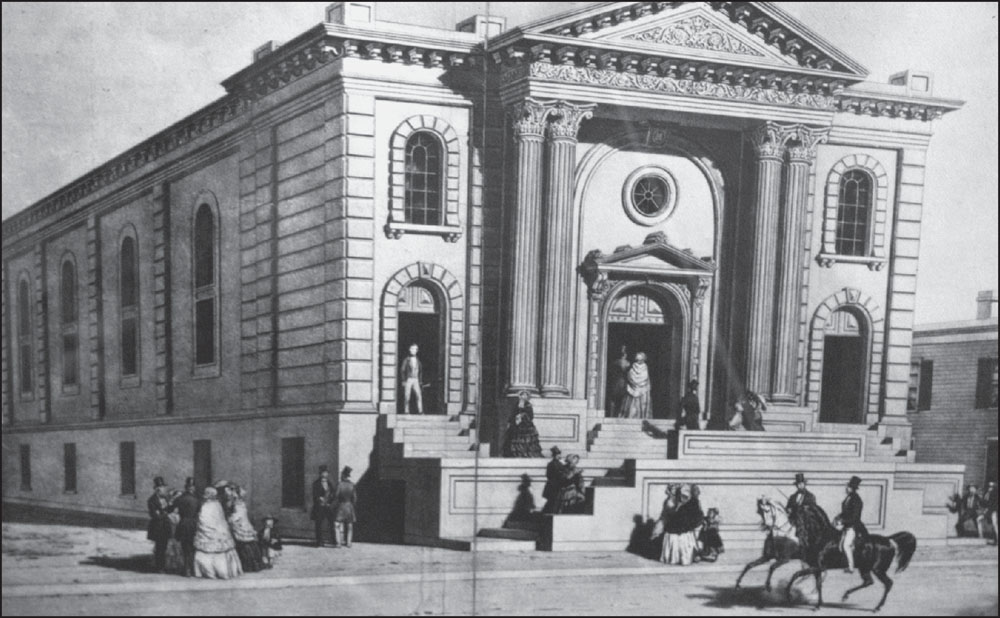
Calvary Presbyterian Church has moved twice since its initial 1854 location on Bush Street. This photograph is of an etching that was probably made by the architectural firm that designed the building. At the time, it was the largest Protestant church in California. As the city continued to rapidly expand westward, this first location became strictly commercial. In 1869, the church moved into a new building in the more residential Union Square area. (Photograph by Beni C. Bacon.)
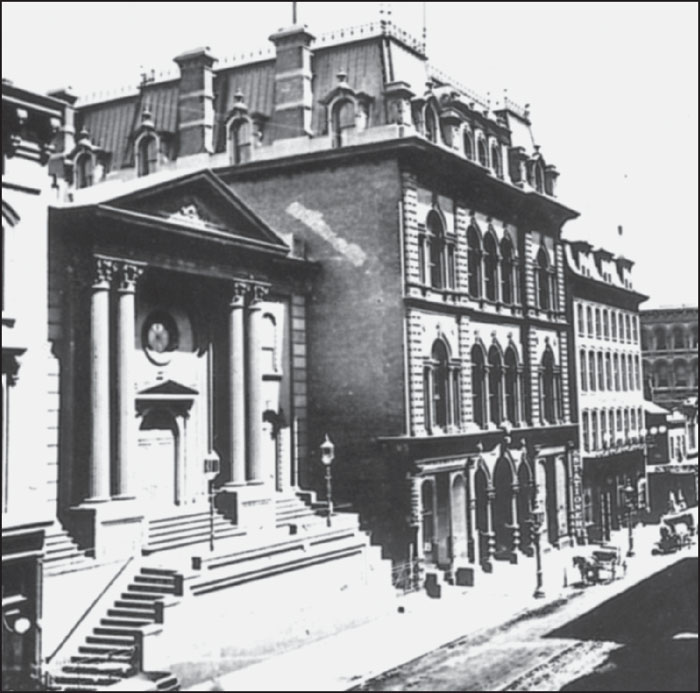
This photograph of Bush Street (looking toward Sansome Street) was taken sometime after 1869 and shows how the then-empty Calvary Church building was being squeezed out by larger commercial buildings. At some unknown date, the church building was torn down. In 1892, the current Mills Building was constructed on this former church site. (Courtesy of Calvary Presbyterian Church.)
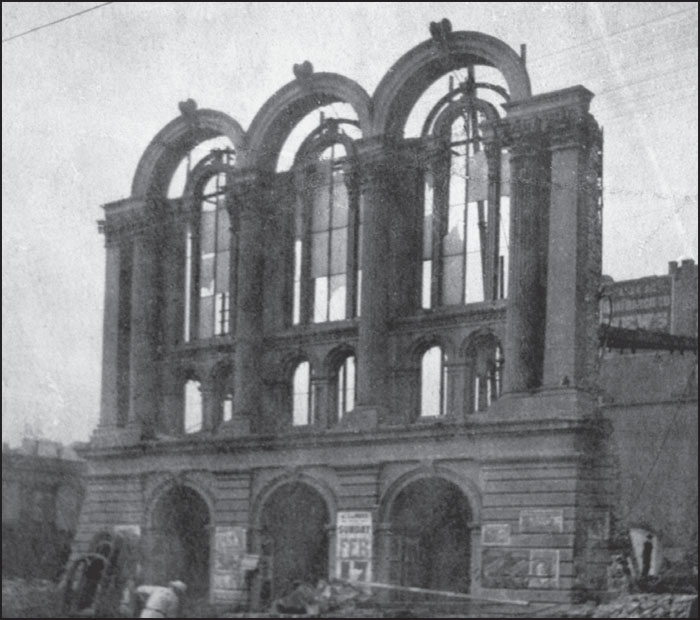
This photograph captures the disassembly of Calvary Church on Union Square. Between 1900 and 1902, all the pews, metal balcony supports, much of the woodwork, the pipe organ, and over one million bricks were salvaged and reused in Calvary’s third and current location, on the corner of Fillmore and Jackson Streets. During those two years, Calvary’s congregation held their services jointly with members of St. John’s Presbyterian Church. (Courtesy of Calvary Presbyterian Church.)

Calvary’s formal dedication in its third and current location was in 1904. Just 26 months later, the 1906 earthquake and fire did terrible damage, devastating the Union Square area. But Calvary suffered no structural damage, and the fire did not come to its new home. The timing of the move from its prior location was extremely fortuitous. In 1978, Calvary Presbyterian Church was added to the National Register of Historic Places and named a San Francisco Historic Landmark. (Photograph by Beni C. Bacon.)
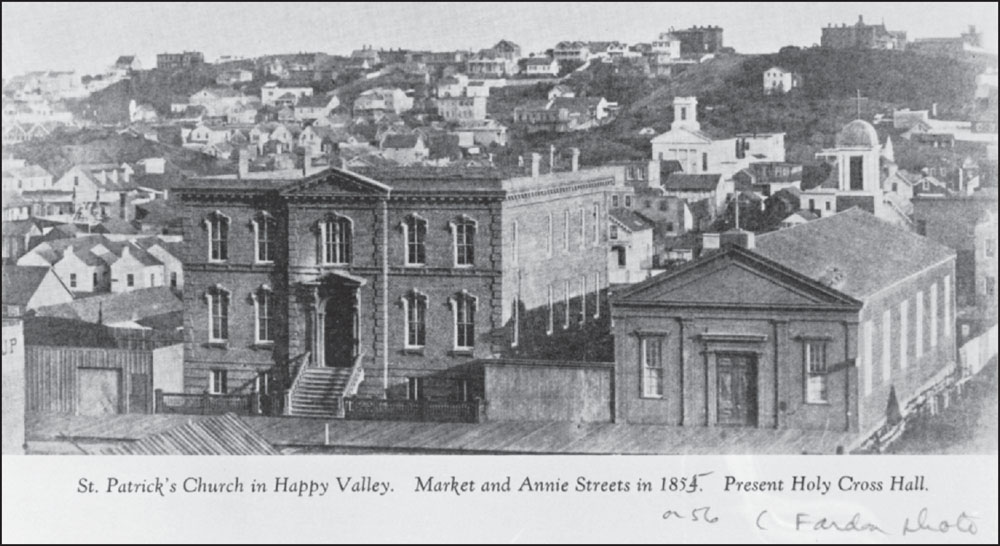
In 1872, St. Patrick’s Church was moved to make way for the Palace Hotel, and in the 1890s, it moved a second time. It is the oldest frame church building still standing in San Francisco. Originally constructed in 1854 on Market Street between Second and Third Streets (where the Palace Hotel stands), it was the second church for the parishioners of St. Patrick. This 1855 photograph, taken by G.R. Fraden, shows its original location. (Courtesy of the Library of Congress.)
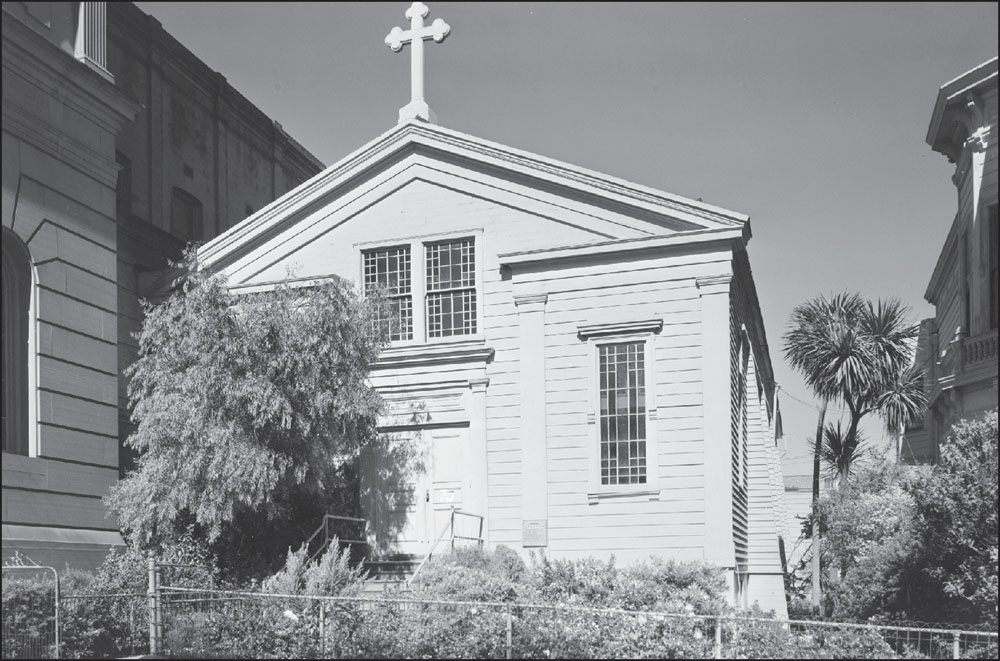
In 1873, St. Patrick’s was moved to Eddy Street (between Laguna and Octavia Streets) to become the church building for St. John the Baptist Parish. In 1891, it moved to its present site to serve as the Holy Cross Parish until 1899, when a new church was consecrated and the old wooden church became the Parish Hall. This 1960 photograph shows the front of Holy Cross Parish Hall. (Courtesy of the Library of Congress.)
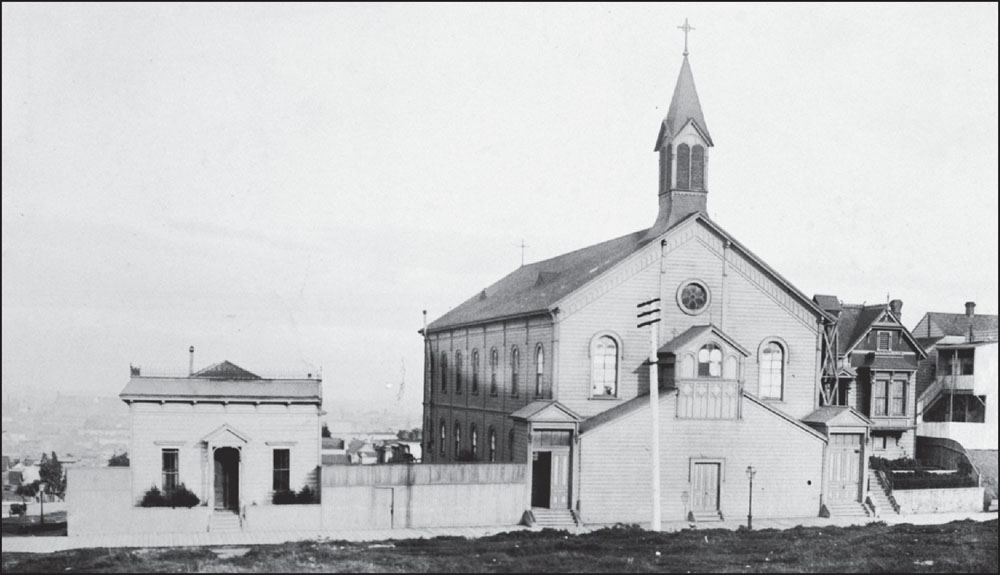
In 1885, Reverend Flood purchased a derelict, one-story Methodist church on Linden and Buchanan Streets. In 1886, he purchased the existing site of Sacred Heart and moved the building. In 1887, he commissioned a larger church and moved the old building to the back of the property where it became a parochial residence. This photograph, taken between 1888 and 1906, depicts the exterior of the building at Fell and Fillmore Streets. (Courtesy of the History Center, San Francisco Public Library.)
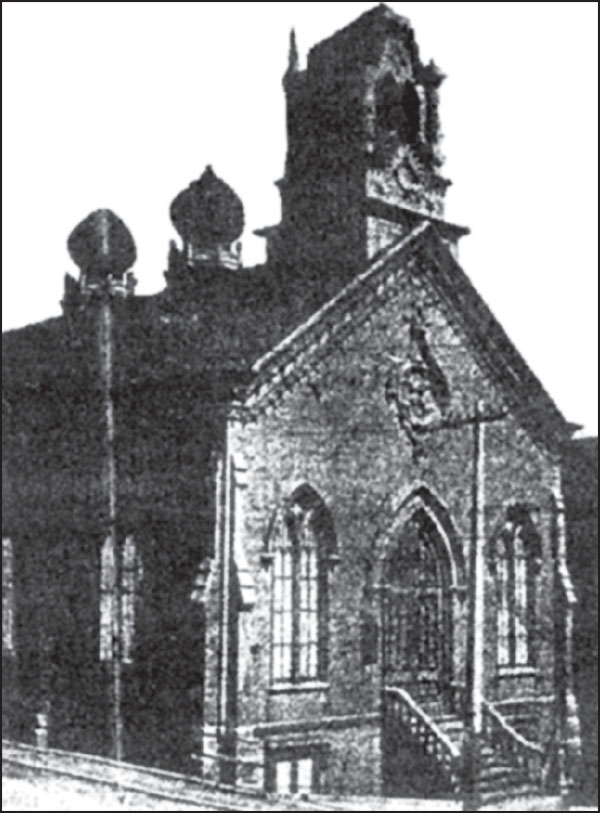
In 1852, the First Colored Baptist Church of San Francisco was founded to celebrate the abolishment of slavery in the West Indies. In 1854, church members purchased an old church and moved it to Dupont Street (now Grant Avenue) between Greenwich and Filbert Streets. This antique photograph shows their second Powell Street location. The congregation moved five more times, but the first moved building on Grant Avenue remained behind. (Courtesy of the Third Baptist Church of San Francisco.)
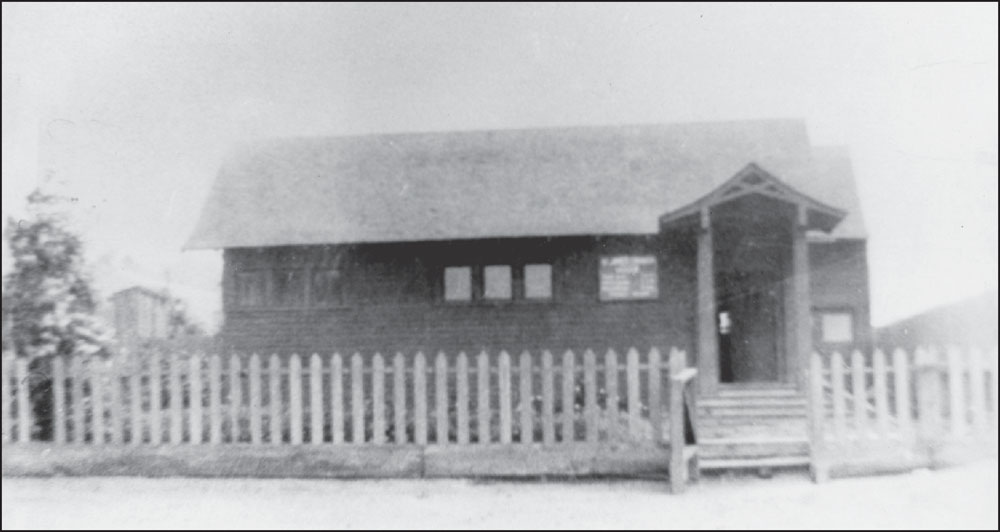
In 1906, the original St. James Presbyterian Church was built at 240 Leland Avenue. By 1922, the facilities were too small for the growing congregation, so plans were made to build a bigger church. This is an image of the original church. The present church at 240 Leland Avenue, designed by Julia Morgan, was completed in 1923. (Courtesy of the Visitacion Valley History Project.)
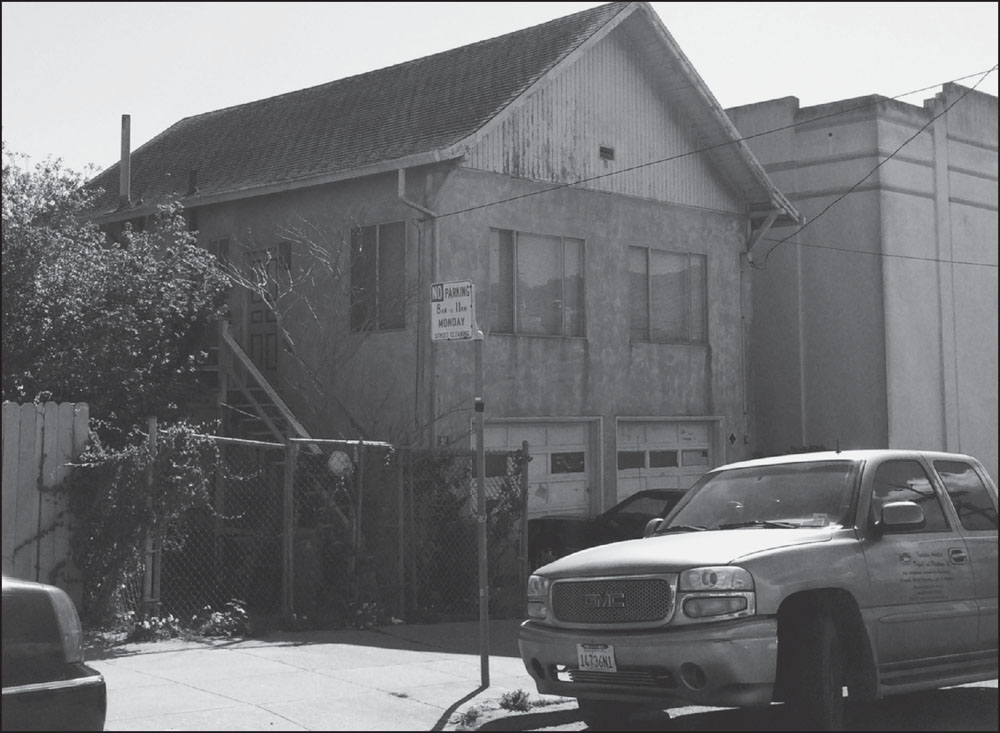
The original church moved around the corner to Schwerin Street, where it was converted to a private residence, as shown in this photograph. It stands at this location today, adjacent to Visitacion Valley Elementary School. The original gymnasium addition at the rear of the lot was not moved or saved. (Courtesy of the Visitacion Valley History Project.)


















